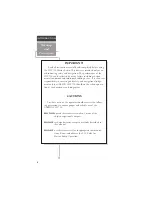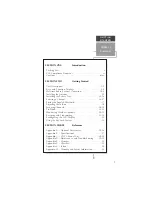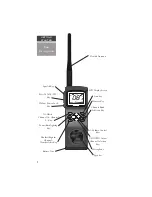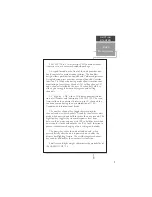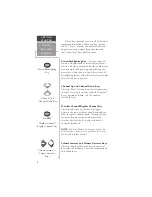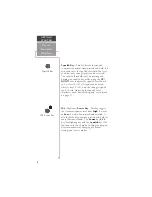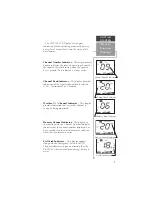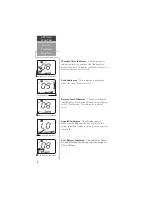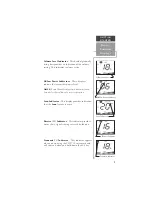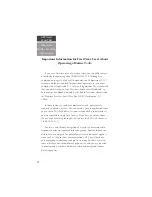
14
GETTING
STARTED
Maritime
Radio Services
Operation
Channels 24, 25, 26, 27, 28, 84, 85, 86, 87:
Marine Operator -
Can be used by any vessel to place a telephone call to any place in the
world or to a vessel outside their transmitting range. Used between
vessels and public coast stations. You must contact a marine operator
on the channel assigned to your navigating area.
Channels WX1, through WX10:
Weather - Used by any vessel to
receive continuous weather information from the National Oceanic
and Atmospheric Administration (NOAA). This is a one-way broad-
cast to any interested parties. You are not allowed to transmit on these
frequencies. A list of weather broadcast stations for the U.S. is
contained in the “Maritime Radio Users Handbook”. They provide
continuous around-the-clock broadcasts of the latest weather informa-
tion directly from the national Weather Service Offices. These
channels are designated on Marine VHF equipment as WX1 through
WX10, but are rarely used beyond WX7.
During severe weather, National Weather Service forecasters can
interrupt routine weather broadcasts and substitute special warning
messages. Specially designed warning receivers either sound an alarm
indicating an emergency exits or tune into the weather frequency. The
VHF 720 is equipped to sound the alarm tone and tune into the
broadcast when the Weather Alert feature is activated.
Some channels will appear on the display with an “A” suffix. These
are “Simplex Channels” receiving and transmitting on the same
frequency. See “Selecting a Channel” on page 16 for a more detailed
explanation. There are other regular channels in the list of channels
on pages 28 and 29 that are not defined above. They have special uses
that do not apply generally to regular maritime traffic and communi-
cations.

